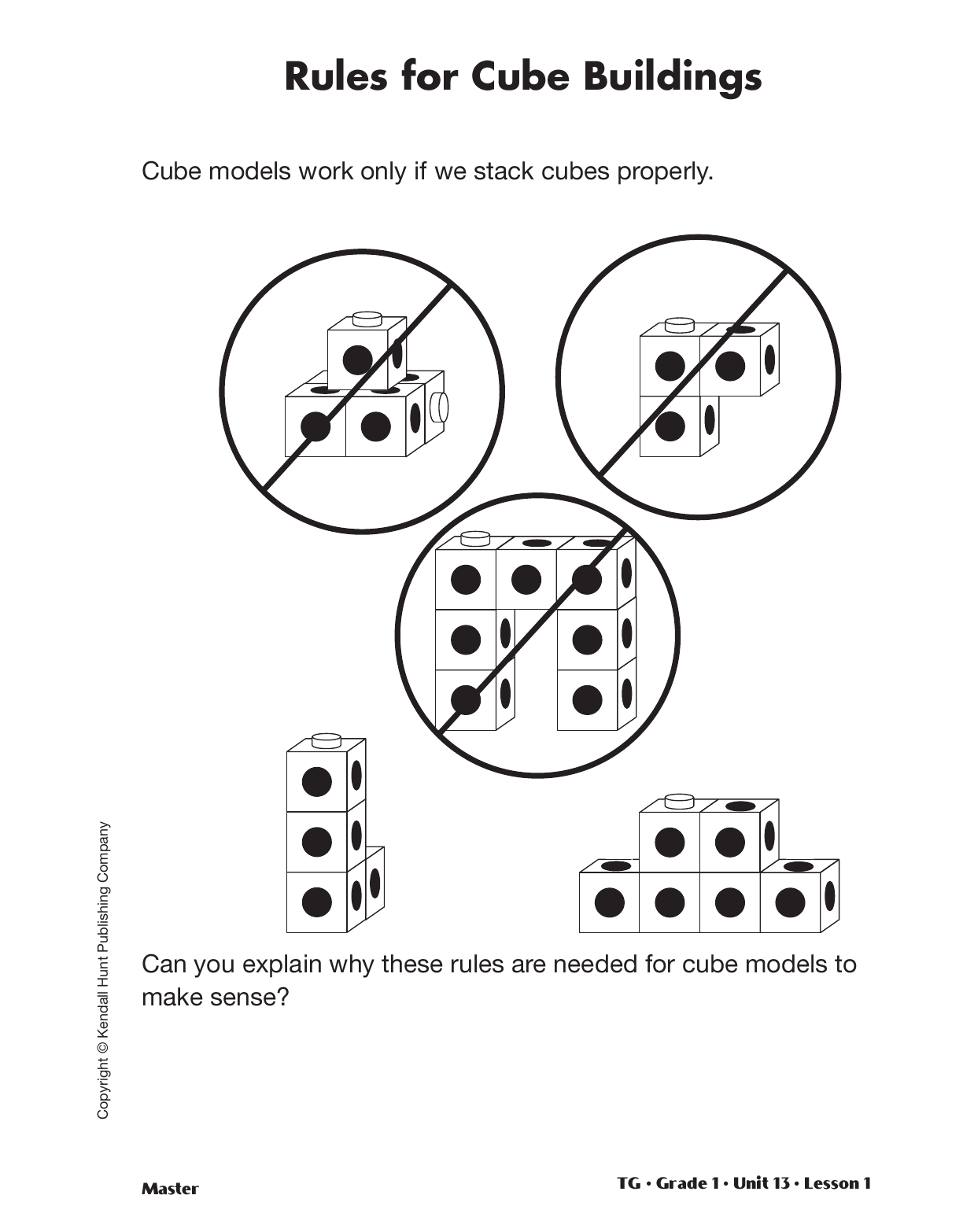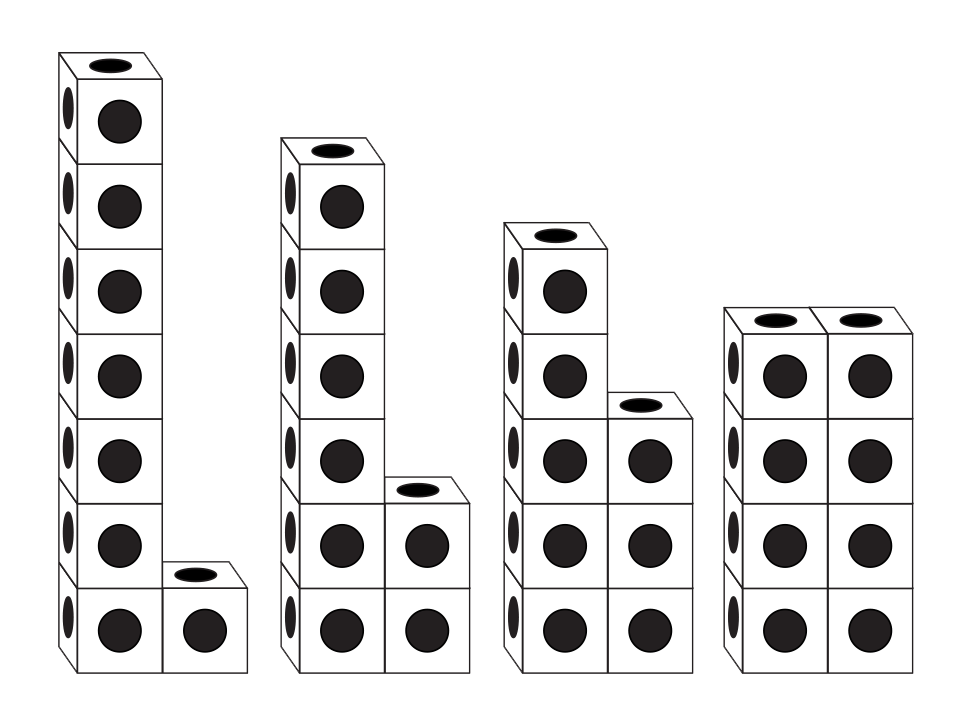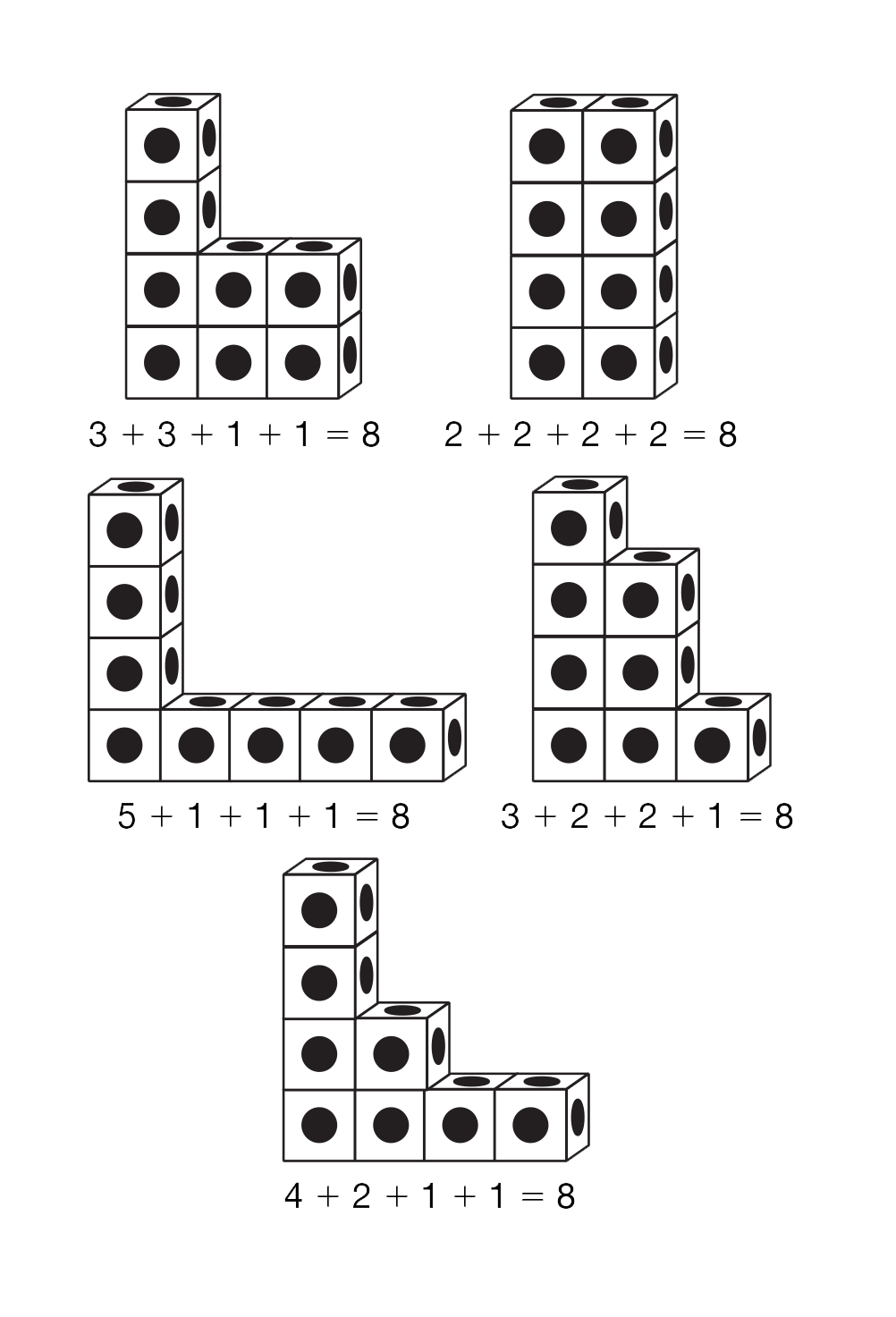Volume of Cube Models
Est. Class Sessions: 2–3Developing the Lesson
Part 2: Cube Models
Build Models with a Volume of Eight Cubic Units. Tell students that they are each going to use eight connecting cubes to construct a building. Display the Rules for Cube Buildings Master. Ask students to look at the three pictures that are shown in circles with a line through them.
Ask:
Direct each student to construct a building using eight cubes that follows these rules. Have the students observe their buildings from different vantage points: front, side, back, top, and bottom.
As you circulate ask these or similar questions:
As students finish their buildings ask them to compare their building with those of other students in their group.
Once everyone has finished building, ask:
Invite student volunteers to describe their buildings to the rest of the class. Encourage students to describe the number of cubes on each floor as well as the total number of floors for their building.
After several students have shared their buildings, ask:
If no student is able to identify that the volume of all of the buildings is the same use these or similar prompts.
End the discussion by reminding students that the amount of space the building takes up is the volume of the building and to find the volume you can count the number of cubes used to construct the building.
Sort Buildings by Height. Tell students that they are going to use a second measurement—height—to organize their buildings. In this activity, height is expressed as the number of floors in the building. Remind students that they can describe the height using floors as a unit because the cubes are equal in size.
Have students sit in a large ring. In the center of the ring, place the eight large sheets of paper you prepared labeled with the number of floors 1 to 8. As you announce each number of floors, ask students to place their buildings on the paper that describes the height of their building.
Then pose questions similar to the following:
Repeat the same type of questioning for other sheets of paper that have several buildings on them.
Encourage students to share their observations with the class as they compare and contrast the buildings displayed in the center of the ring. Students should establish the criteria for deciding what to consider alike and what to consider different.
Develop the idea that shape is independent of volume as shown by the variety of shapes made with a volume of eight cubes. Guide the discussion to help students generalize that any given volume (larger than two cubic units) can have a variety of shapes. Remind students of their work in Unit 8 Lesson 2 Goldilocks and the Three Rectangles and Lesson 4 Unit Designs. In those lessons students found that a variety of shapes can have the same area.
Discuss Writing Number Sentences for Buildings. Choose several different buildings that each have four floors. Tell students that they can write a number sentence that will describe the volume of the building. Choose one of the buildings from your selection and tell students that you will write a number sentence adding the number of cubes on each floor. For example, in a building that has 2 cubes on each floor, the number sentence will be 2 + 2 + 2 + 2 = 8 and for a building with three cubes on each of the first two floors and one cube on the third and fourth floors the number sentence will be 3 + 3 + 1 + 1 = 8. See Figure 6 for the number sentences for buildings with four floors. Repeat this activity with one or two more of the different buildings. Ask students to provide the number for each floor of the building as you write it in the number sentence. Record several of these number sentences on the board.
Then ask:



















